The effects of rotor slipring runout. Potential for brush float and bounce?
Please excuse the following garble, and some liberties with approximations. It's just how my head works. This is when a chalkboard, and room for arm flailing, is very handy.
You can skip thru all this and just see the important thing is at the bottom of the post.
Here, I used a screw and threaded sleeve as a depth gauge to measure the working zone of the XS brush and spring, from the slipring surface to the spring basepoint of the outer brush mount. This measured as 0.895" (almost 23mm).
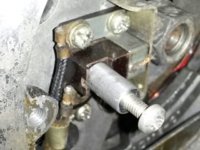
Half worn factory brush is on top, new MikesXS brush is atop the ruler.
At the bottom is the depth gauge for comparison.
The spring is just barely compressed, almost 1 inch long, so we'll just say that it has a free length of 1.000" (25mm).
The spring's OD is 0.174", with a wire size of 0.014", and has 13 coils, of which 11 are active coils.
Reverse engineering the spring with the online spring calculators (to get the average spring rate) yields 1.20 LbF (pounds) per inch.
This equals a spring rate of 544 grams per inch.
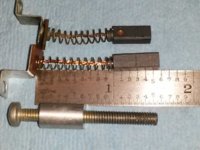
Weighing the XS650 brush. Didn't want to unsolder the thing, so I set the brush on the scale's weighing pad, with the mount bracket on the edge. That should eliminate the bracket and about half of the spring from the measured weight. The scale shows 8 grains, we'll just say it's about 0.50 Grams (0.0183 ounces).
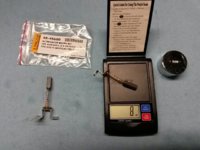
A pic of my notes (subject to subtle revisions):
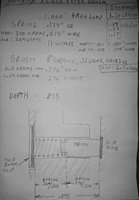
When new, the brush's rectangular body length is 0.575" (14.6mm). The wear limit line leaves a brush length of 0.275" (7mm). So, we'll just say that the weight of a worn brush is about 0.24 grams.
When the brush is NEW, the spring is compressed down to 0.320" (0.895" working depth - 0.575 brush length).
This produces a compression of 0.680" (1.000" freelength - 0.320").
This 0.680" compression yields a spring force of 370 grams (0.680 x 544 grams per inch).
When the brush is WORN DOWN to limit, the spring is only compressed down to 0.620" (0.895" working depth - 0.275 brush length).
This produces a compression of 0.380" (1.000" freelength - 0.620").
This 0.380" compression yields a spring force of 207 grams (0.380 x 544 grams per inch).
So,
When NEW, the 0.50 gram brush is held by 370 grams of spring force. It can get 740 G's of acceleration (370 / 0.50).
When OLD, the 0.24 gram brush is held by 207 grams of spring force. It can get 863 G's of acceleration (207 / 0.24).
Kinda interesting, huh? A worn brush is more likely to follow a wobbling/runout slipring.
Now, using the above formula:
G = Rm x Krpm^2 / 70
Where:
G is G-load, 1G= earth gravity
Rm is runout in mills (0.001")
Krpm^2 is Krpm squared
Krpm is thousands of rpms, 6000 rpm would be 6 Krpm
Let's use 8,400 rpm as the extreme limit for determining 'G' acceleration force on the brush.
This simplifies the formula, since 8.4^2 / 70 = 1, so we're left with:
G = Rm
What this means is that for every 0.001" of runout, you will need 1 G of accelerative force on the brush to keep it on the slipring.
If the stock spring can provide anywhere from 740 to 863 G's of acceleration, then the tolerable runout can be as much as 0.740" to 0.863". (!!!)
Of course, this is WAY beyond the clearances in the alternator shell, and clearance to the brush holder.
So, unless someone can offer a less ludicrous analysis, I'd have to say that rotor runout will never induce brush float.
I suppose the next question should be: How much pressure (force per unit area) is required to maintain good current flow in a carbon/copper slipring application? Is there a relationship between pressure and ampacity?
(*whew*)
 ...did anybody with the defective Woodruff key slot also check their runout? Huh?
...did anybody with the defective Woodruff key slot also check their runout? Huh? 

 but it ain't the rotors fault!
but it ain't the rotors fault!


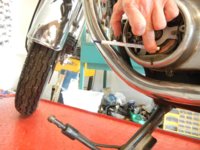
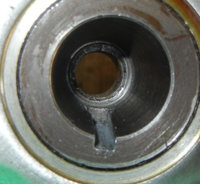
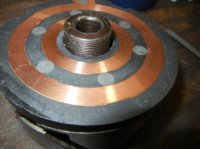
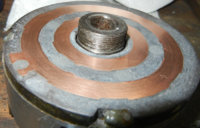




 You are the math king of XS650 2many
You are the math king of XS650 2many